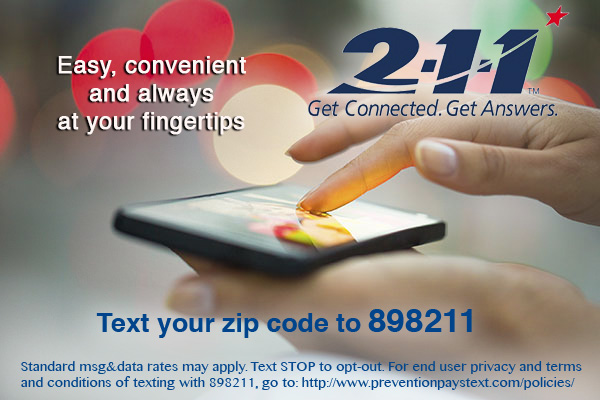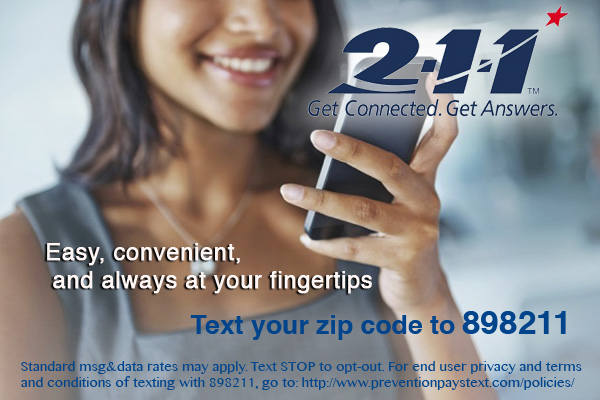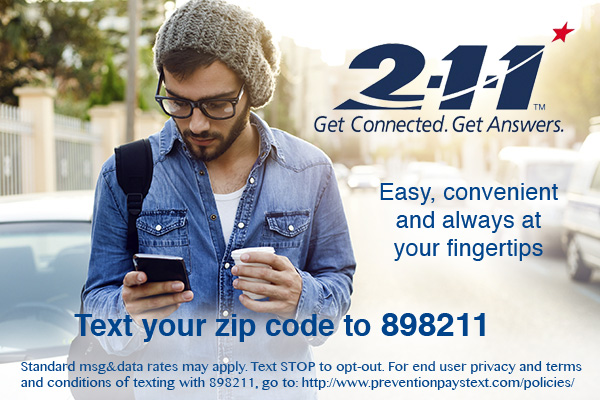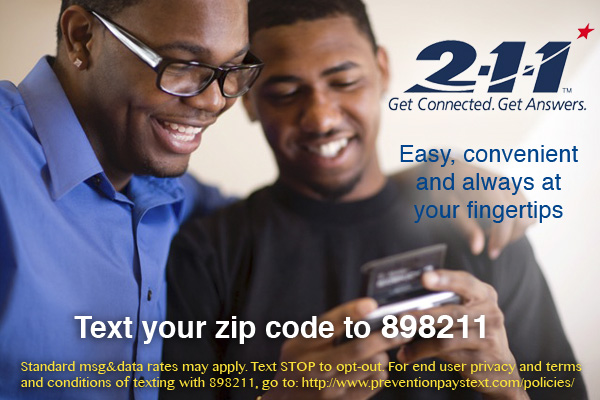Assign best-in-breed text message surveys and watch your numbers increase rapidly.
Read moreThe Explosion of Text As a Two-Way Communication Tool
Mobile phones are ubiquitous and have opened doors in how relationships can be developed and maintained between two people, between groups of people, and between organizations and businesses and their clients.
Organizations have identified the mobile phone as a tool for massive and scalable communication with their clients via text with the idea that this is a quick and easy communication method to better engage individuals in their community.
Over 80% of U.S. adults own a smart phone and over 95% of clients who agree to receive text messages from an agency/organization open those messages within the first three minutes of receiving them. It makes sense that these same organizations are dramatically increasing their investment in this type of communication.
The question is: Does an opened text message mean a relationship has developed?
In terms of building a relationship, the most ideal scenario is for two individuals to have in-person conversations to learn about each other, but this method is neither cost nor time effective for an organization to employ. So, how can text messaging be used to build relationships with individuals while serving communities of thousands, even millions?
There are several strategies that take advantage of the use of text messaging to interact with clients. Two common strategies are:
One-way Messaging: This strategy serves to disseminate information. In terms of building relationships, however, it is impossible to do so with a human being via one-way communication.
Two-way text messaging without adaptations: This strategy involves participating in two-way conversations but never adapting the content of the messages. When trying to build a relationship, a participant in a conversation will become frustrated if the responses he/she receives indicate that the other party is not listening. Imagine if someone asks you what you want to drink, you respond juice, and then they give you a soda—how frustrating, right?
The Most Successful Approaches Embrace Adaptability Through a Fusion of Tailored, Automated Texts and Live One-On-One Responses
So, what is "adaptability"? Our clients manage thousands of conversations with customers every day via text. This knowledge has taught us that there are certain characteristics that are essential to using text messaging as a tool to build and strengthen client relationships. These features foster quality communication while maintaining low costs and allowing for scalability to thousands, even millions of clients:
Two-Way: Again, a good relationship is based on two-way communication between both parties involved. If the client does not have the opportunity to express his/herself, it is no surprise that he/she would not feel included in the relationship. The provider also loses the opportunity to listen to the client. Client feedback represents elements of their personal stories. If a client decides to share pieces of their personal story, that information should be treated as an opportunity to better understand your client as a person.
Adaptable: Two-way communication can be a missed opportunity if the content of the messages do not match the information the client shares. In a relationship, it is important to remember that the client's perspective is personal and that people are dynamic and can change their minds. Using their personal responses to send tailored content to them lets them know that they are being heard. Adaptability allows for messages to be based on client feedback and to change over time as needed.
Giving the Client Control: SMS marketing campaigns decide what clients will talk about and what time they will talk about it, instead of letting the client decide. In a relationship, it is important to have opportunities where each side can decide the content of their conversations.
Individualized: Many agencies and organizations see the value of text messaging as an opportunity for mass communication. While text messaging is a good tool for that purpose, if the goal is to build relationships, it is necessary to take a much more individualized approach. In a good relationship, each participant responds to comments and specific questions of one another in a personalized way.
And it's these relationships that we encourage and support through our highly effective, efficient and customizable two-way text messaging platform. Engage, educate and empower individuals in your community through the medium your clients use every day.
Embrace two-way texting today!
Call To Action: Effective Strategies for Alerting Clients about Your Text Service
The call to action is what your clients need to text in order to contact your agency. A text call to action is similar to posting your phone number. So, when you go live, you can update your website with a call to action banner.
Most agencies we work with will have texting capacity before their community knows it. Texting is the most common communication channel for Americans under 55, more than voice calls and email. So, how do you reach this rapidly growing group? How do you build up your web presence so that members of the community know you can receive text messages from them? Here are a few simple and effective tips!
TIP #1: Add your call to action to every page of your website. One way to make sure would be to put it in the footer or header, or anywhere that is prominent and highly visible and viewable.
Tip #2: Keep it simple. The call to action has two parts, the keyword and the short code. For example, text DEMO to 898211 where "DEMO" is the keyword and 898211, the short code. The keyword can have quotations or not - it doesn't matter. The best method is all uppercase, no quotations. You can also highlight the keyword and short code. When you post your phone number, it's just that - a phone number to call.
Tip #3: Make it clickable. Same as click to call, a click to text link will autofill the short code in their text application, thus making it easier to access services. With 80% of web browsing happening on smart phones, there's a good chance they're on their mobile phone when the visit your website. If you're not on a texting device, you'll get an error. So, be mindful of this.
Tip #4: A visual aide can also be helpful. A simple graphic that shows individuals texting can make your call to action really pop and doesn't cost much.
Tip #5: Advertise as a "new service". People tend to get excited about new services, especially when it's as novel as text. Funders are also more likely to take notice when you make noise about it.
Tip #6: Don't forget the Terms and Conditions! Telling folks "standard msg and data rates apply and they can text "STOP" to opt out" is not just best practice; with website posts, it's also a requirement. While most people know they can text STOP, it's a nice courtesy for those that don't. Prominently posting your Terms and Conditions also sends a strong signal that your agency takes end user privacy seriously.
Tip #7: Include the call to action in your IVR and for folks on hold. This will give you a great jumpstart and generate traffic instantly. Plus, your community will love you for it.
Here are some examples:
**Please note, all samples are for the 211 sector. Services are available for any agency offering live help. We power several short codes that are branded for various priority populations and types of agencies. All collateral is available for your agency's uses. Just ask us! We will also provide you with the source images so that you can brand with your own logo and language.
Anonymous Service for Clients that Need It!
You asked for it. Well now you've got it. For clients needing a completely anonymous service, you can now mask client phone numbers and also remove the ability to view the sms tab at the staff level. How do you implement? If you're already a client, just give us a call and we will change your queue settings to "masking" status. All numbers will be masked unless you elect to turn it off. Additionally, you can assign/un-assign the sms tab. The sms tab is the last place where client data for clients that are "opted out" is viewable. For this level of change, we recommend contacting us first before implementing. We will help make sure the service is customized to suit the specific needs of your agency!
For agencies looking to implement an anonymous text helpline, contact us for details today! We'll schedule a 30-minute demo so you can see how the service can be made completely anonymous.
For some agencies, sanitized data is not enough. We now offer identity masking.
Have You Seen the Email from AIRS?
“Text allows I&Rs to explore innovative opportunities to push information and messages out to clients within seconds (think disaster, think public health, think appointments).”
You’ve probably seen or heard a reference to the email from AIRS called “It Is No Longer All About the Calls…”
The ideas expressed in the email mark a significant shift in the way AIRS members communicate with their clients. With the rapid growth of text across all demographics (Americans under 55 text more than they talk on the phone and email) this is also an important time to learn about the crucial role of texting and how to differentiate between services and capacity.
In fact, here at PreventionPays we are hyper-focused on making the platform more useful to contact centers. To further demonstrate our commitment to the AIRS sector, PreventionPays Text has partnered with AIRS to bring members a significant cost reduction in the standard I&R package! Read more about our partnership with AIRS by going here: http://www.preventionpaystext.com/airs-ems-specialoffer/
Join us in an upcoming webinar or schedule a live demo today by going to: http://www.preventionpaystext.com/contact/
If you haven’t seen the AIRS email, here it is in its entirety:
Is your I&R service answering fewer calls than two years ago?
Maybe that question reads hollow as your I&R phones seldom stop ringing but even if you are struggling to handle existing demand without more staff … there is still a fair chance that fewer calls are coming in, even if you still can’t answer them all …
However, we do know that for many I&Rs, decreasing call volume is a discernible pattern. And this should not be surprising as it reflects the reality of changing demographics and personal preferences that has been widely predicted within I&R circles.
Economic improvements might be one factor but what we are seeing is the continued shift to web-based assistance and the use of Chat and Text. Put crudely, every year at one end of the age spectrum, a percentage of I&R clients who prefer the telephone leaves our active market and are replaced at the other end of the spectrum, by I&R clients who use voice interactions far less. And as for the folks between those extremes – people like you and me – to varying degrees, phoning has become what you do when you don’t have other options.
This is something that we all know and within I&R, we need to keep translating this knowledge into actions.
This is far from a complete list of the enhancements, improvements and opportunities that make up everyone's I&R to-do list. But it is a snapshot of what every I&R should be looking at...
Website:
- It needs to be promoted as much as your phone number.
- If there is an online resource database, it should be easily found (i.e. your website either opens up on the database or it is the most central and most visible click on the page).
- Your online database should not look like a database. It should use graphic guided searches geared to the most common needs of your community.
- You should also add extensive meta-tags to ensure it shows up in relevant Google searches
- And it must be mobile friendly
Online Chat
- You need to have it available or be moving quickly towards it.
- Many I&Rs have introduced Chat over the past 2-3 years (while some have been offering it for 5+ years). Chat is being used by all ages and all sectors. ADRCs that offer Chat find it being used by clients with disabilities and by caregivers.
- The number of I&R Chats is increasing exponentially every year.
Text
- This is the next growth area for I&R coverage.
- One 2-1-1 launched Text service early this year and now handles more than 1,500 text inquiries a month.
- Text allows I&Rs to explore innovative opportunities to push information and messages out to clients within seconds (think disaster, think public health, think appointments).
- Logically, the use of Text skews to lower income individuals (people who only have mobiles and where Text usage is the cheaper option).
Here is some information from the commercial world to consider … Texting to Surpass Phone Calls for Business Communication … and … Can I Text Your Call Center … and from a different angle, this is from Innovations for Poverty Action … and this on the ‘Art and Science of Reminders’ (and could this seem to signal a potentially new dimension to I&R follow-up?! – some I&Rs are already exploring variations of this for income tax programs).
Essentially, we need to continue to provide communities with I&R services that meet everyone’s current and future preferences.
In case you missed them the first time around, here is an AIRS website self-assessment template and an AIRS guide to providing online Chat. Going on the AIRS Networker and entering “Text” into the main search box will bring up a number of discussion threads on this topic that have been part of an active dialogue over the past year.
AIRS







